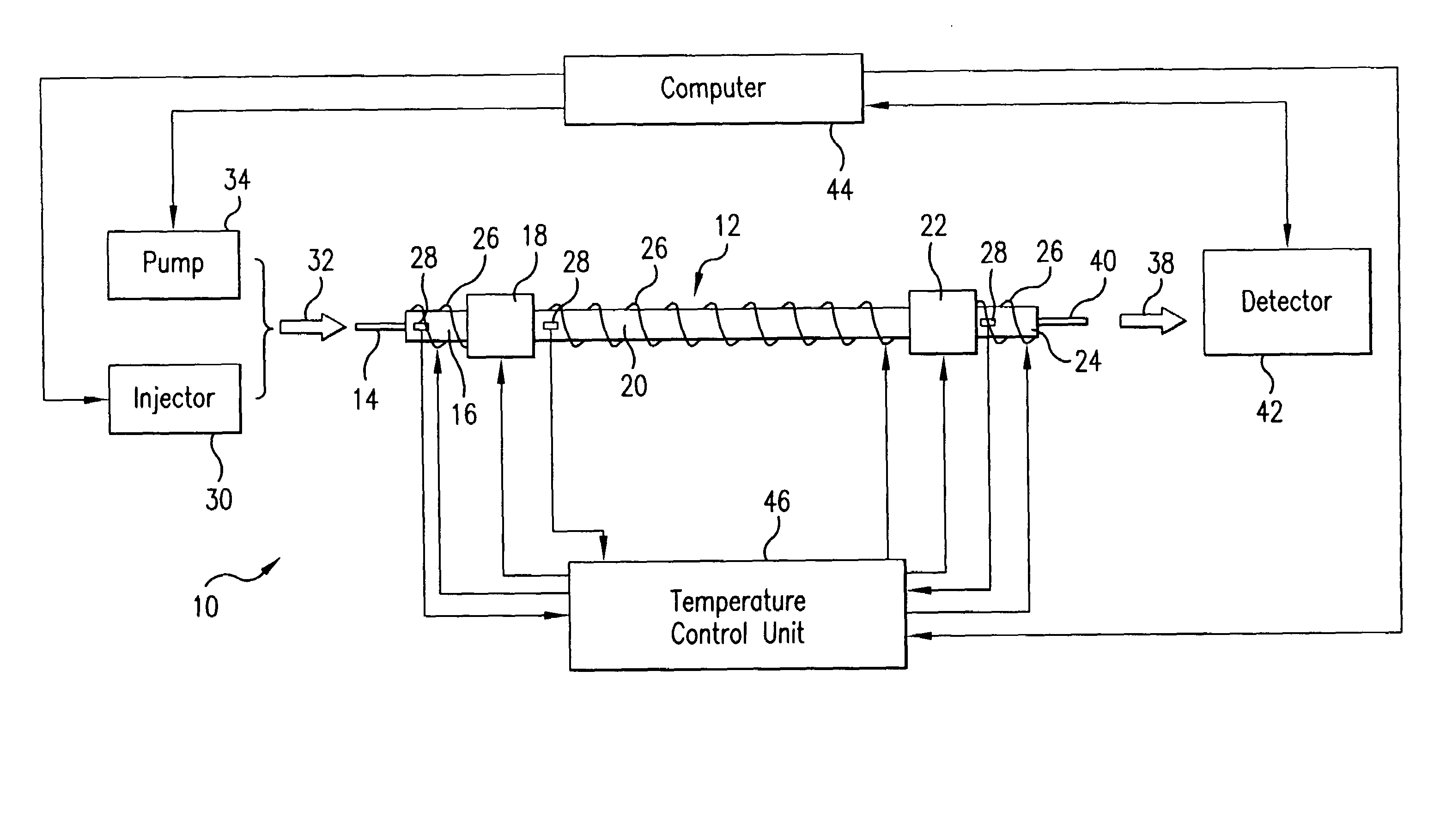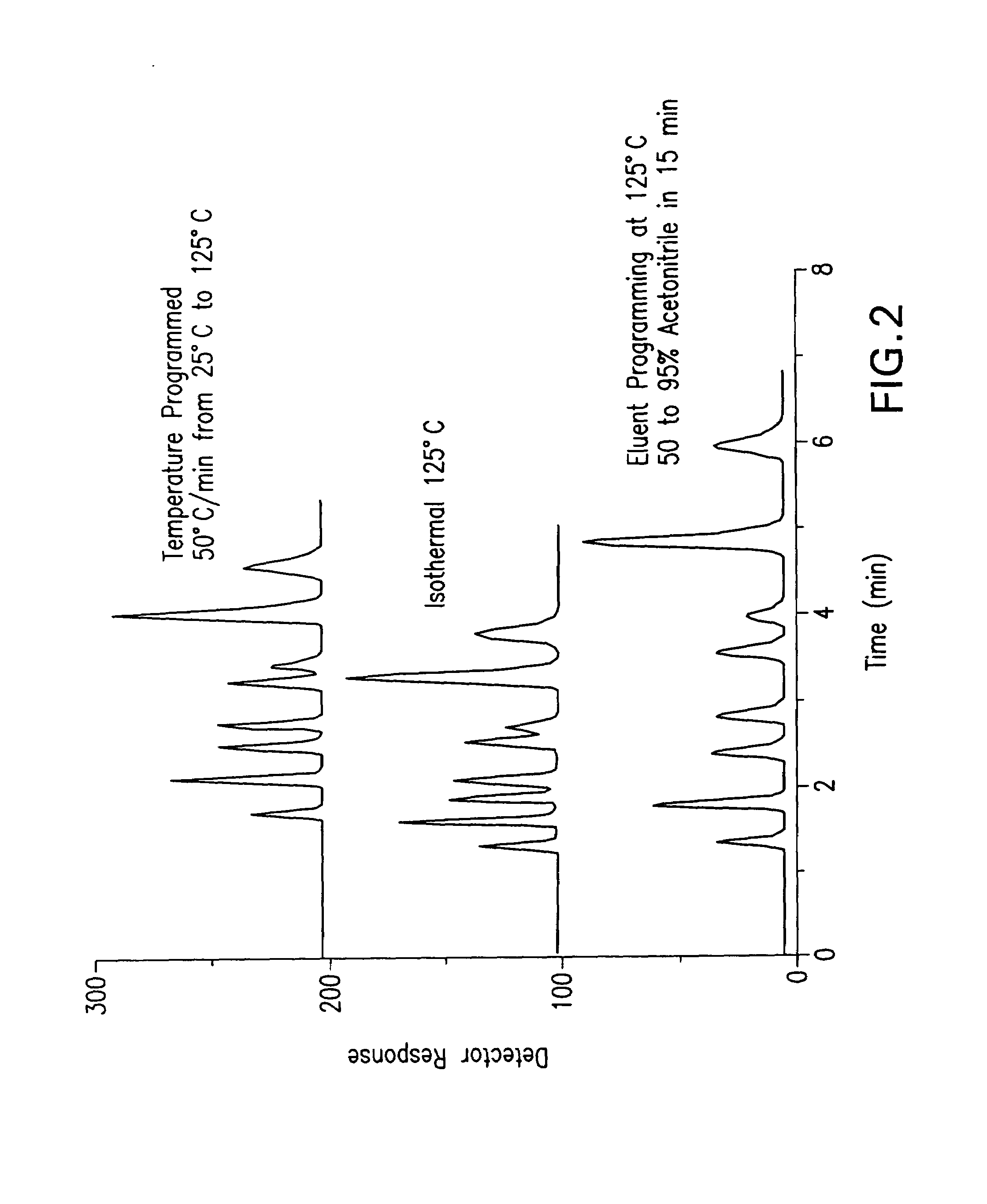Temperature programmed low thermal mass fast liquid chromatography analysis system
a liquid chromatography and low thermal mass technology, applied in the field of liquid chromatography systems, can solve the problems of increasing the back pressure of the column, increasing the performance of the pumping system, and limiting the application of the system, so as to reduce the power consumption of the lc analysis system, and improve the efficiency of the system.
- Summary
- Abstract
- Description
- Claims
- Application Information
AI Technical Summary
Benefits of technology
Problems solved by technology
Method used
Image
Examples
Embodiment Construction
[0059]Referring to FIG. 1, there is shown a temperature programmed low thermal mass liquid chromatography analysis system 10 including an LC column 12 having an inlet end coupled to an LC guard column 14 which is a section of a chromatography tubing inserted into a wire heated tube (transfer line) 16 followed by junction 18 to the LC column 12 contained within a wire heated conduit (or tube) 20. The LC column 12 also has an output end coupled to a junction 22 followed by a wire heated tube 24 (an additional transfer line).
[0060]The junctions 18 and 22 include chromatography fittings that are heated by a small heating block of material, such as aluminum, with a heating cartridge and temperature sensor. Each tube 16 and 24 is formed of a thin walled metal, such as for example aluminum or stainless steel. Aluminum may be preferred for short lengths tubing because of its high thermal conductivity and its ability to bring heat very effectively to its end edges to avoid cold spots at junc...
PUM
 Login to View More
Login to View More Abstract
Description
Claims
Application Information
 Login to View More
Login to View More - R&D
- Intellectual Property
- Life Sciences
- Materials
- Tech Scout
- Unparalleled Data Quality
- Higher Quality Content
- 60% Fewer Hallucinations
Browse by: Latest US Patents, China's latest patents, Technical Efficacy Thesaurus, Application Domain, Technology Topic, Popular Technical Reports.
© 2025 PatSnap. All rights reserved.Legal|Privacy policy|Modern Slavery Act Transparency Statement|Sitemap|About US| Contact US: help@patsnap.com



